The Philodendron tortum is prized for its long, fern-like leaves the get larger with each new leaf. I have documented my P. tortum over a 3-year period (so you can trust that what I’ve done works) with some important details that should help you on your journey.
It’s less about buying perfect leaves and more about buying a healthy root system
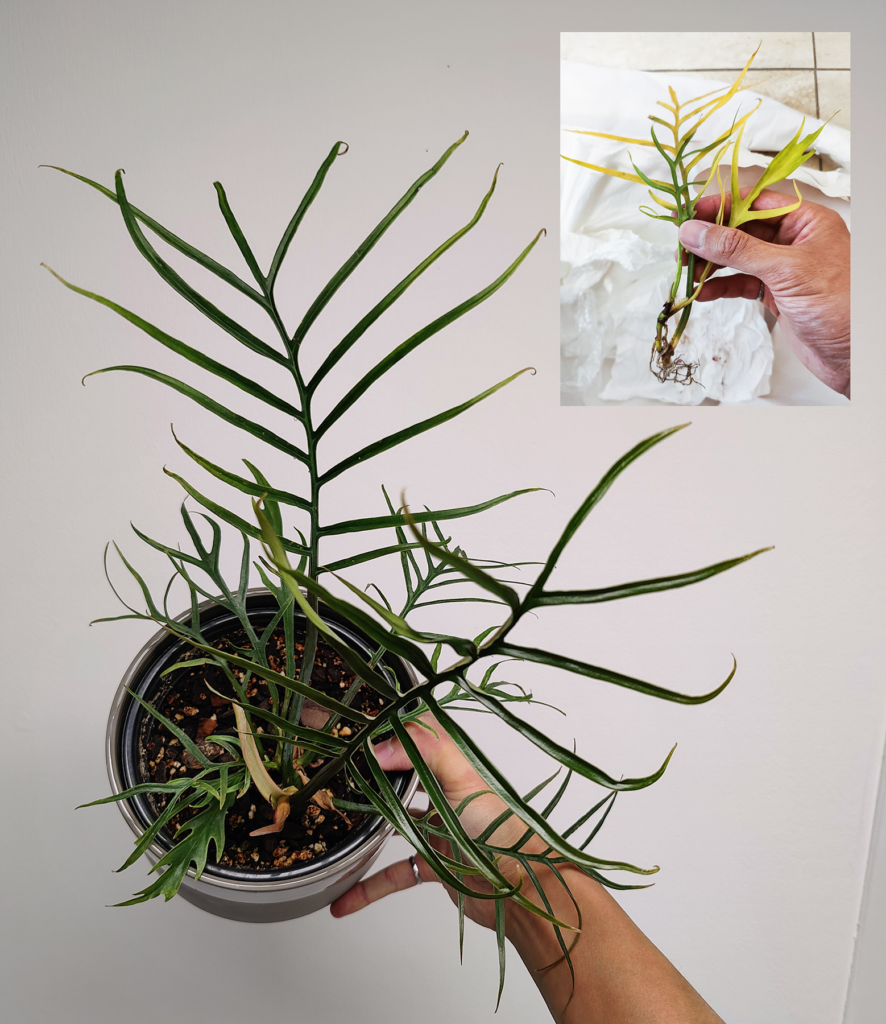
Day 1: Potting up the new arrivals
As is typical with imported plants, there was a delay in processing the shipment. Plants that are shipped between countries must be shipped bare-root so the shipper needs to ensure the roots are healthy and kept slightly moistened (usually by wrapping the root system with a moistened paper towel followed by plastic wrap to retain the moisture). It’s a fine line between drying out and rotting!
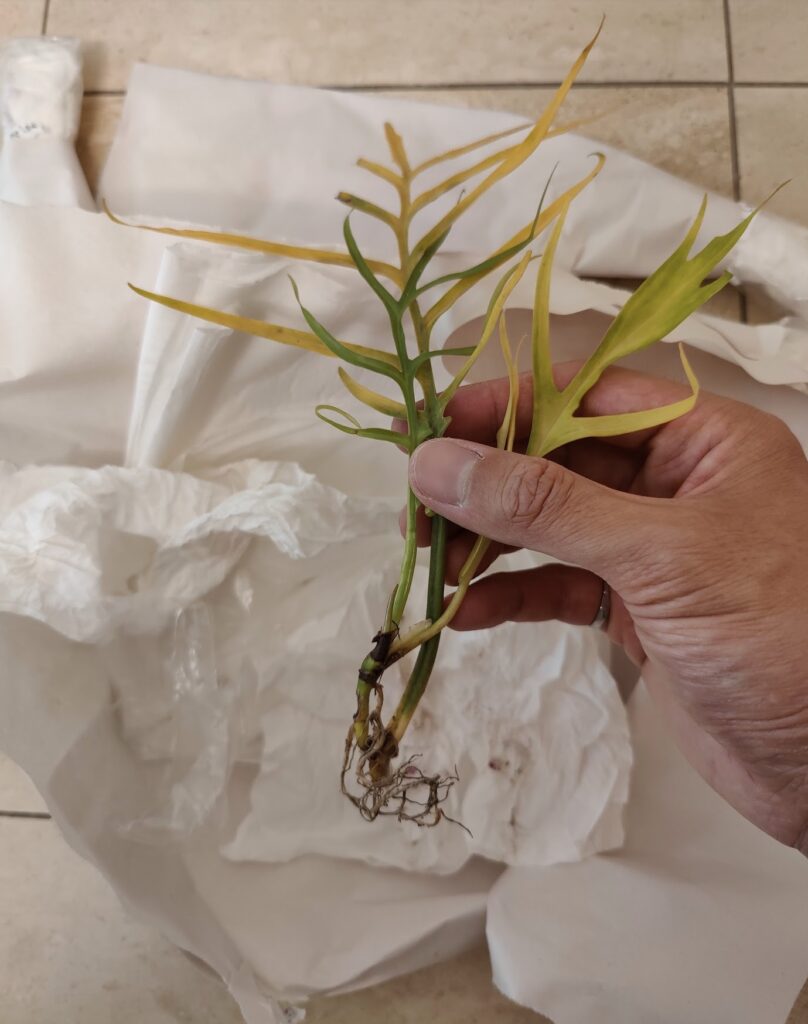
While it may be disheartening to receive a plant with all yellowing leaves, try to keep a long-term perspective: it’s less about buying perfect leaves and more about buying a healthy root system! While most of the current leaves were yellowing, I didn’t see any rotting in the root system so I was hopeful this plant could make a comeback once potted up.
Long-term perspective: a healthy root system is more important than initially perfect leaves
House Plant Journal
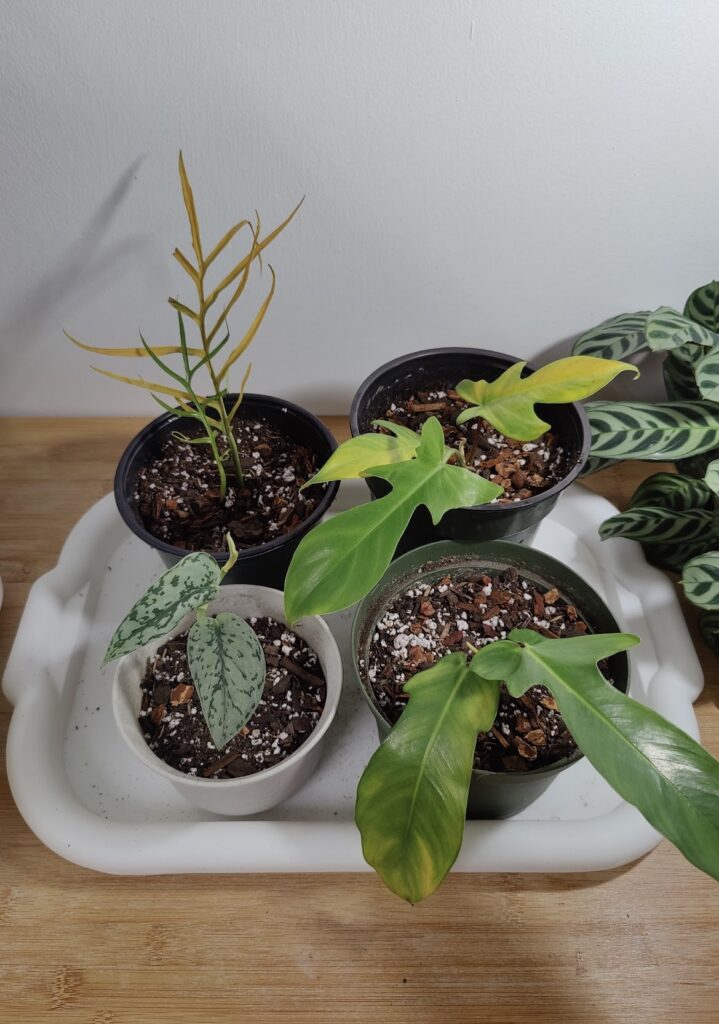
8 Months Later: New leaves!
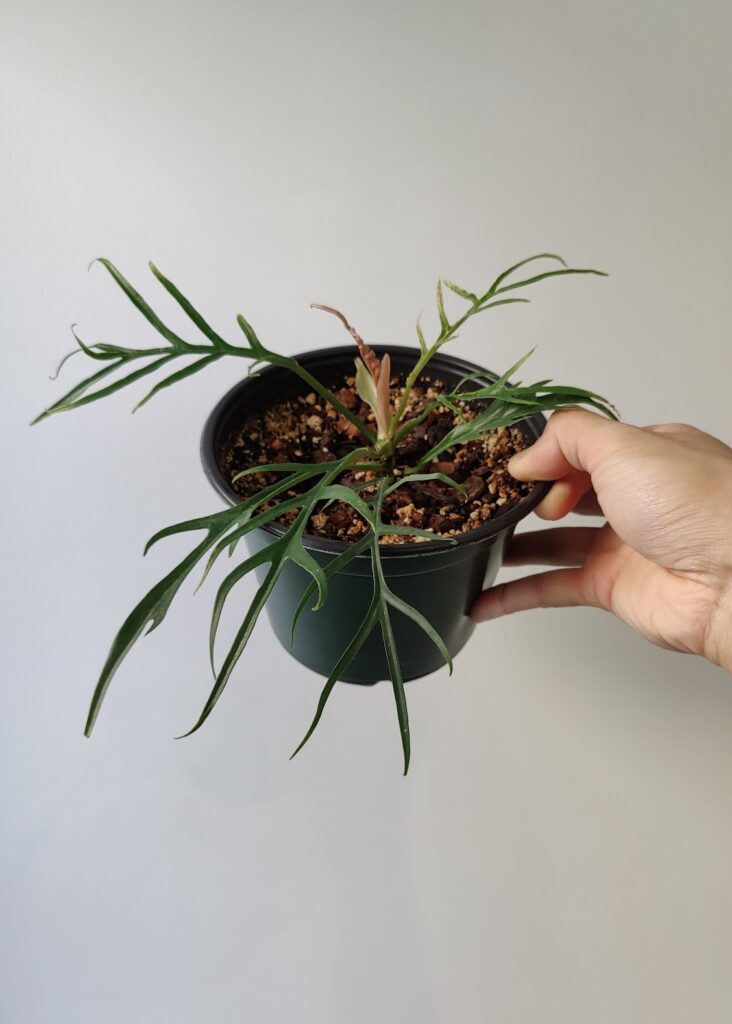
When starting with a juvenile plant, the first 5-6 leaves will be small and not too impressive. Still, I was curious to see how these new leaves emerge so I put the plant through my time lapse setup!
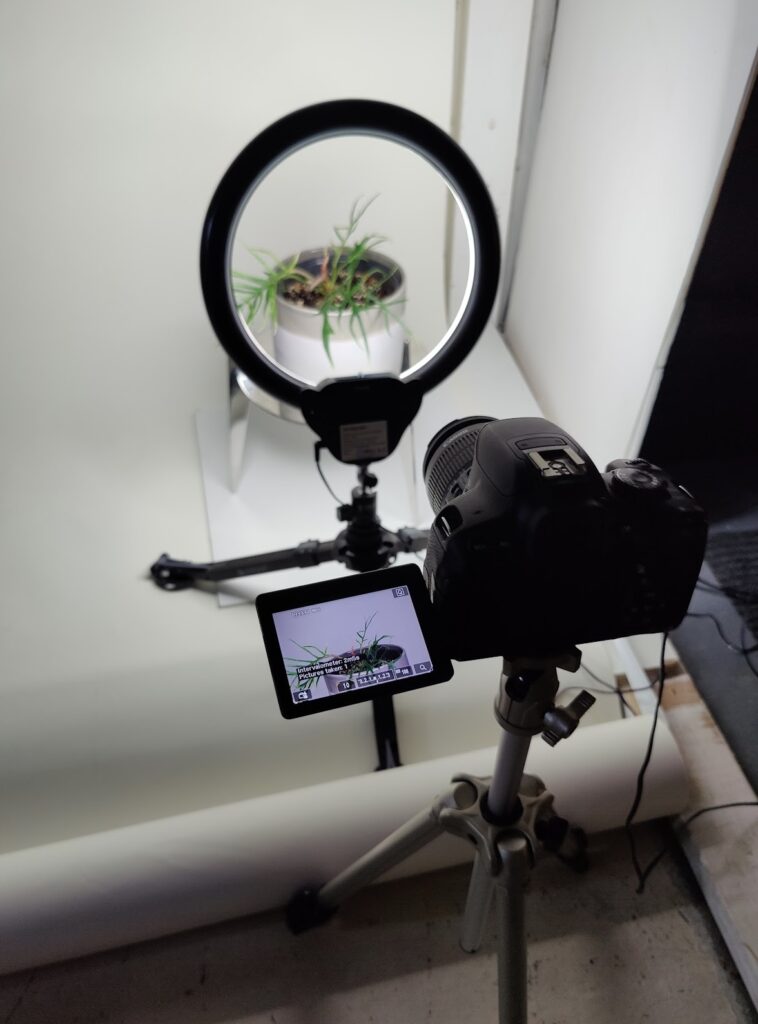
Light: Grow Light Settings for Philodendron tortum
White LED measuring 200-400 FC (40-80 µmol/s/m²) at the leaf for 12 hours a day (DLI will be 1.7 to 3.5 mol/day) is adequate for a P. tortum. You can push the growth with more light – for example 800 FC (160 µmol/s/m²) for 16 hours to get 9.2 mol/day – just be sure keep up with watering/fertilizing.
Once you start measuring light, you’ll realize the term “bright indirect light” is meaningless. Learn here
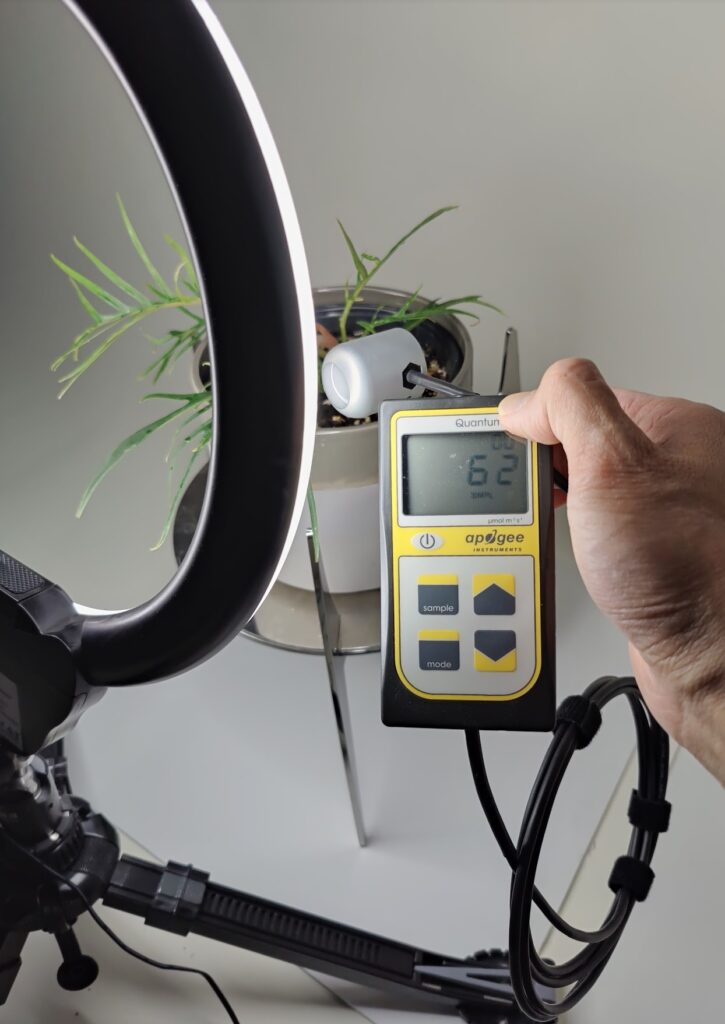
1 Year, 4 Months Later: Living at the Windowsill
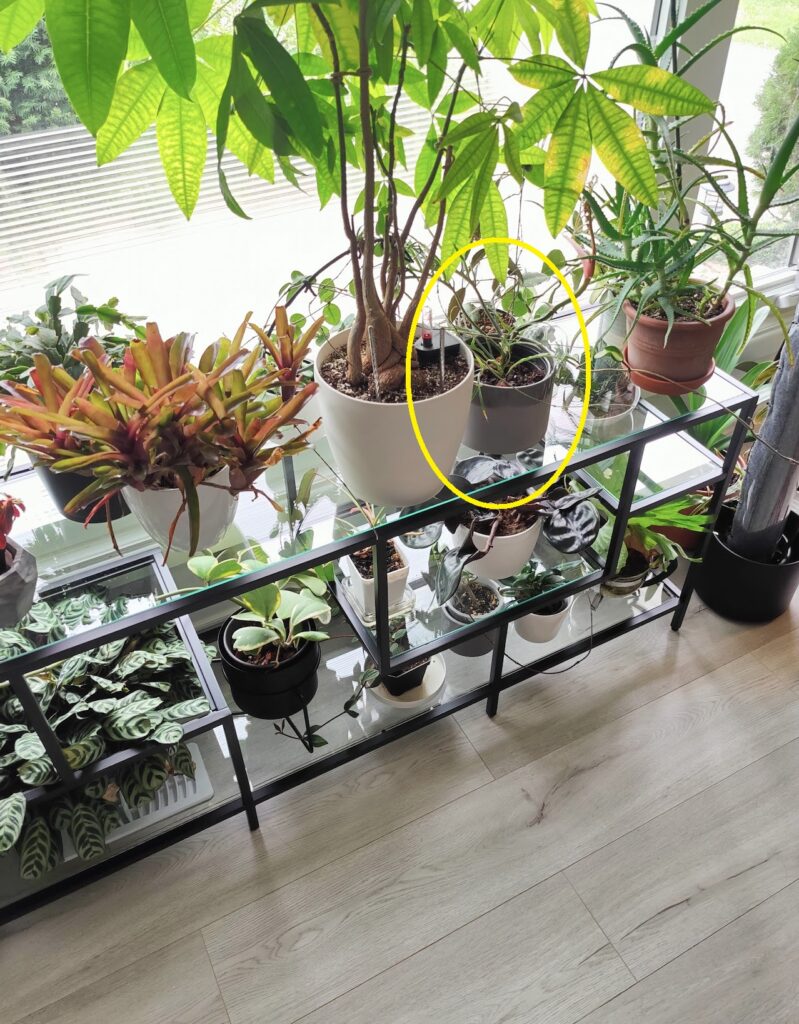
Light: Indoor Natural Light Settings for Philodendron tortum
With the plant sitting right in front of my largest window, it grew quite nicely with the following indoor natural light situation: about 2 hours of direct sun and indirect light in the 200-400 FC (40-80 µmol/s/m²) range. If the plant would receive more than 3 hours of direct sun, I would recommend blocking it with a white sheer curtain.
WHEN to Water:
For Philodendron tortum, water when the substrate is about halfway dry.
HOW to Water:
Fully saturate all parts of the substrate and allow excess water to drain away.
Fertilizing:
Since you’re growing the P. tortum for its leaves, a high nitrogen fertilizer with ratio 3-1-2 will be suitable. With good light, you can add fertilizer with every watering. Fertilizer article here
Substrate:
As with most aroids, Philodendron tortum appreciates some porosity so I’ve been successful using a standard potting mix (coco coir/peat moss, perlite) with some added bark chips. About 3 parts potting mix to 1 part bark chips works fine.
Propagation & Restructuring:
Philodendron tortum propagates easily from node cuttings. It’s very easy to make node cuttings for friends by putting the cuttings into a sealed propagation box filled with moist sphagnum moss. They don’t need much light while propagating: indirect in the 100-200 FC (20-40 µmol/s/m²) range or 100-200 FC x 12 hours by white LED grow light will do.
2 Years Later: Long Vine Needs Propagating
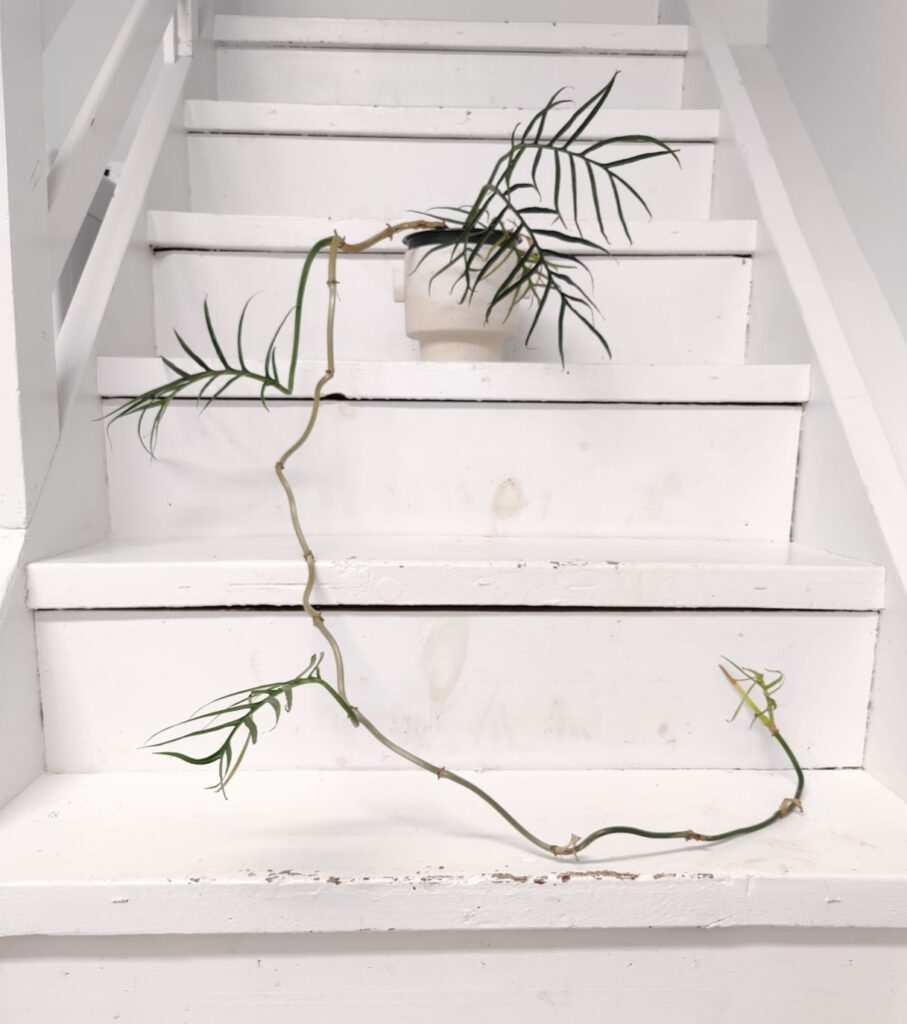
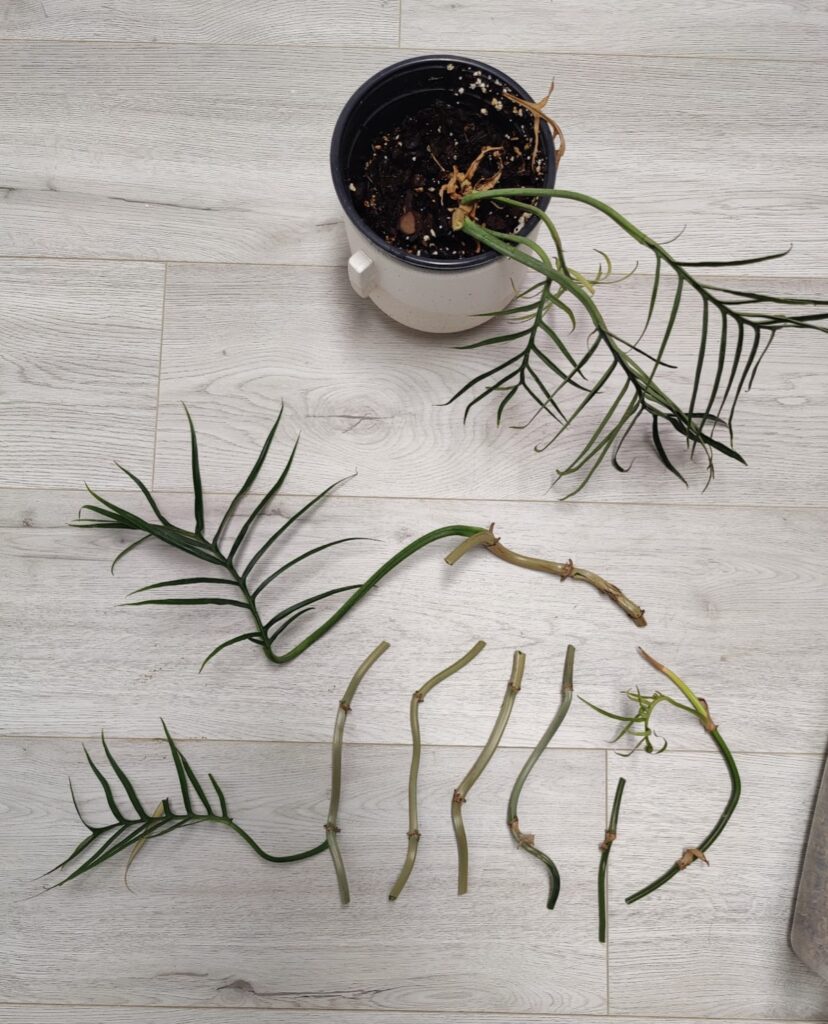
Using a Propagation Box:
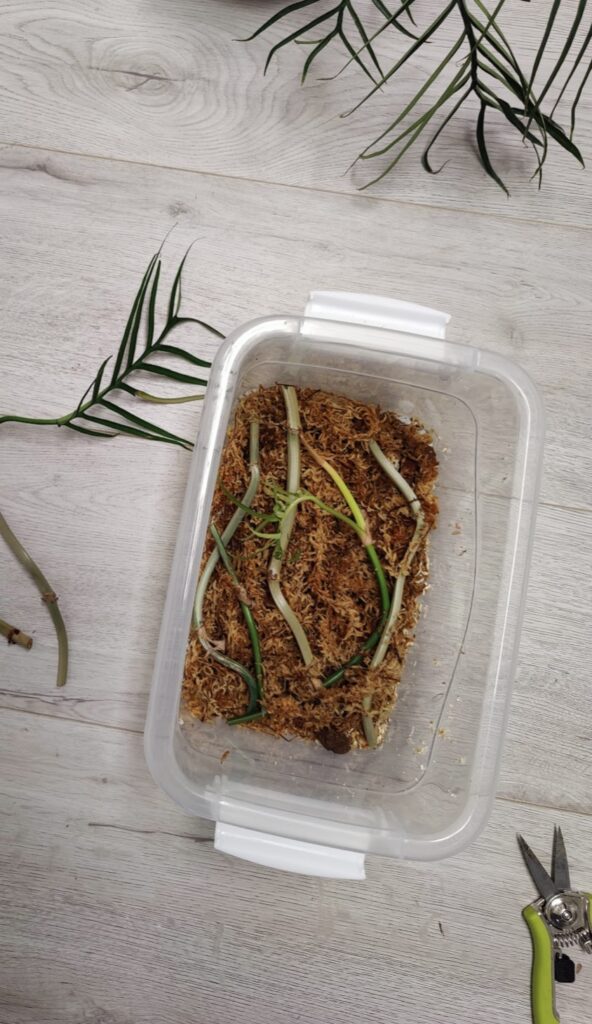
The great thing about using a closed propagation box is that it retains moisture so I was able to close it, place it near the windowsill, and forget about it. I ended up giving the fully rooted cuttings to a friend 6 months later.
6 Months After Cutting: Looking Much Better
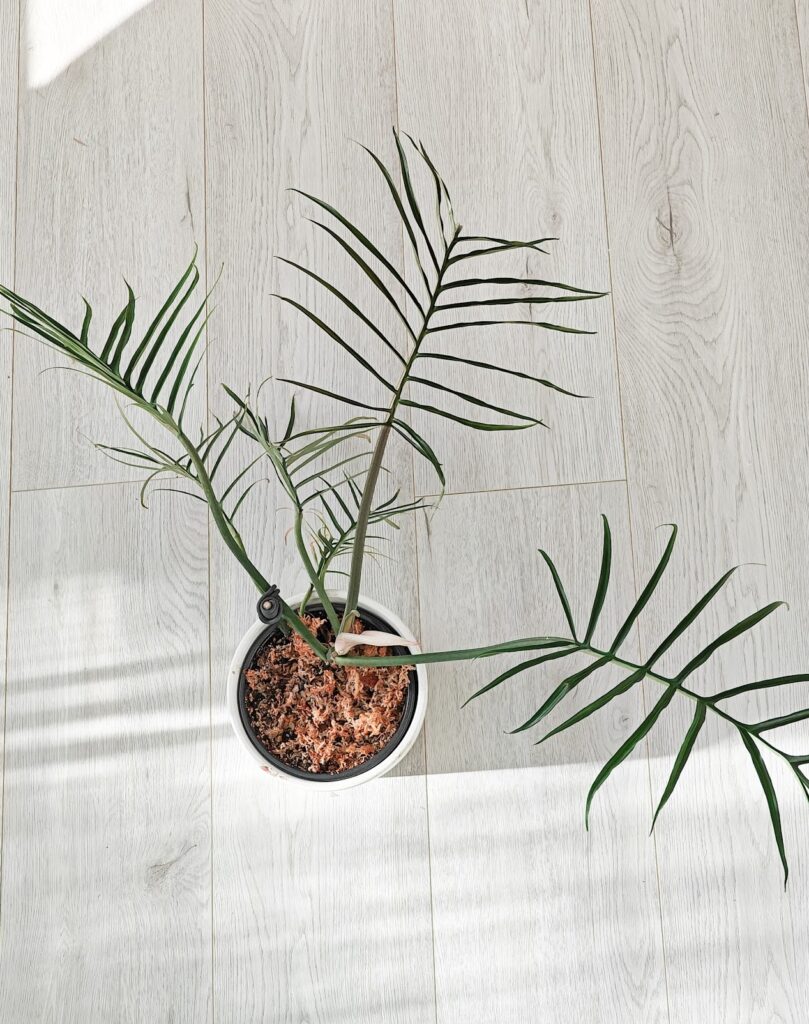
1 Year After Cutting (3 Years Overall): Newest Leaves are Huge!
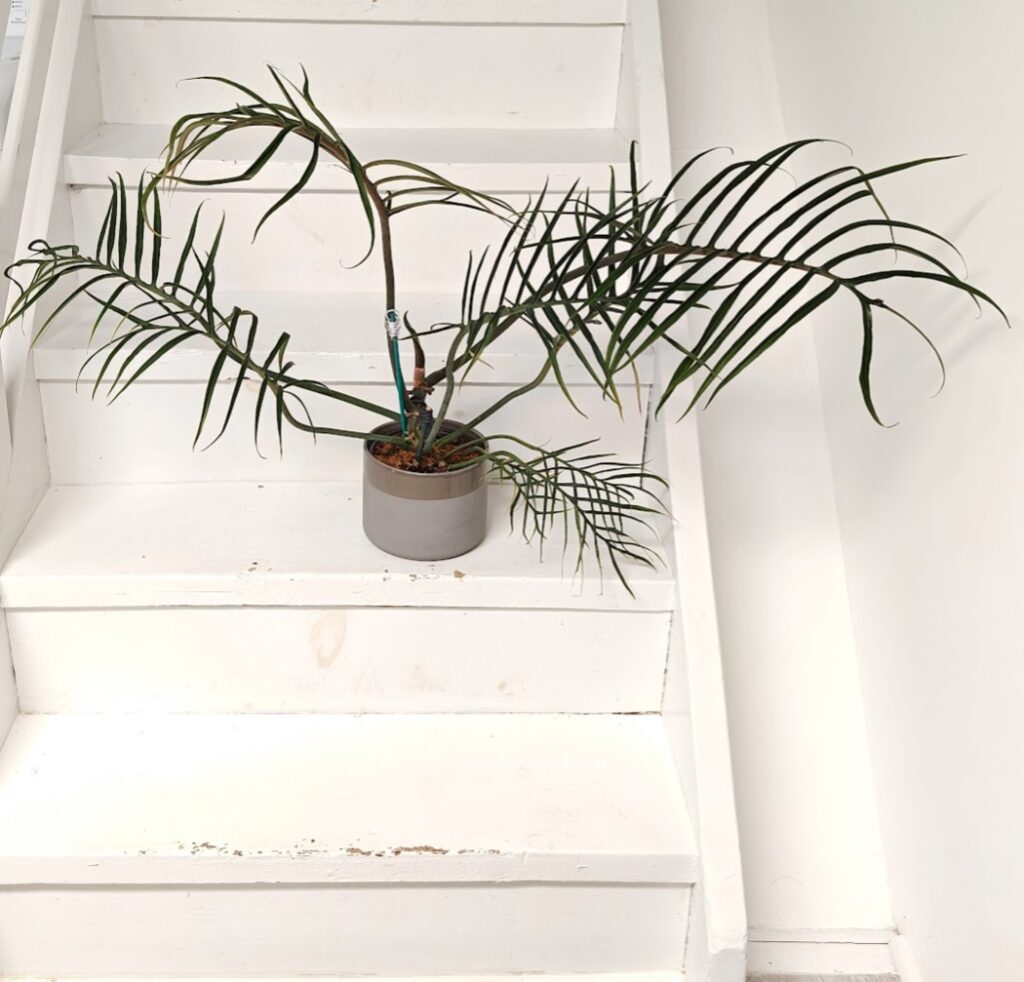
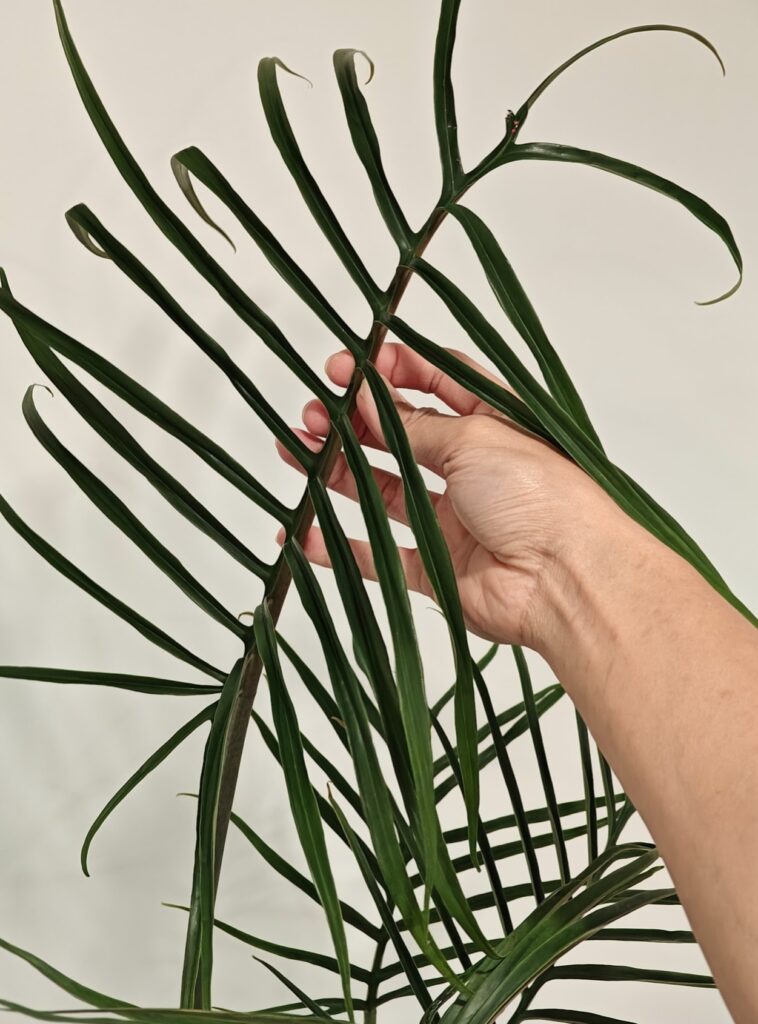
Pest Problems
Any of the typical houseplant pests are fair game: mealybugs, spider mites, scale…but thrips seem to LOVE aroids. I’ve had a low-level thrips infestation for a while since there were some plants that I simply refused to part with – my Philodendron tortum being one of them.
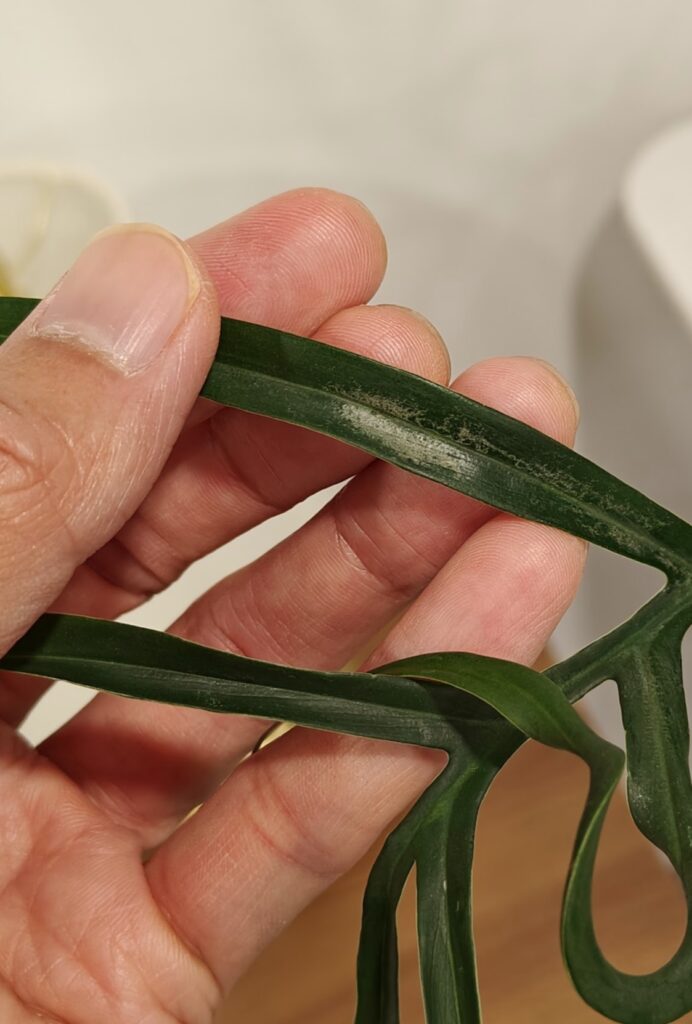
For more photos and treatment methods for thrips: read this article
The Journey Continues…
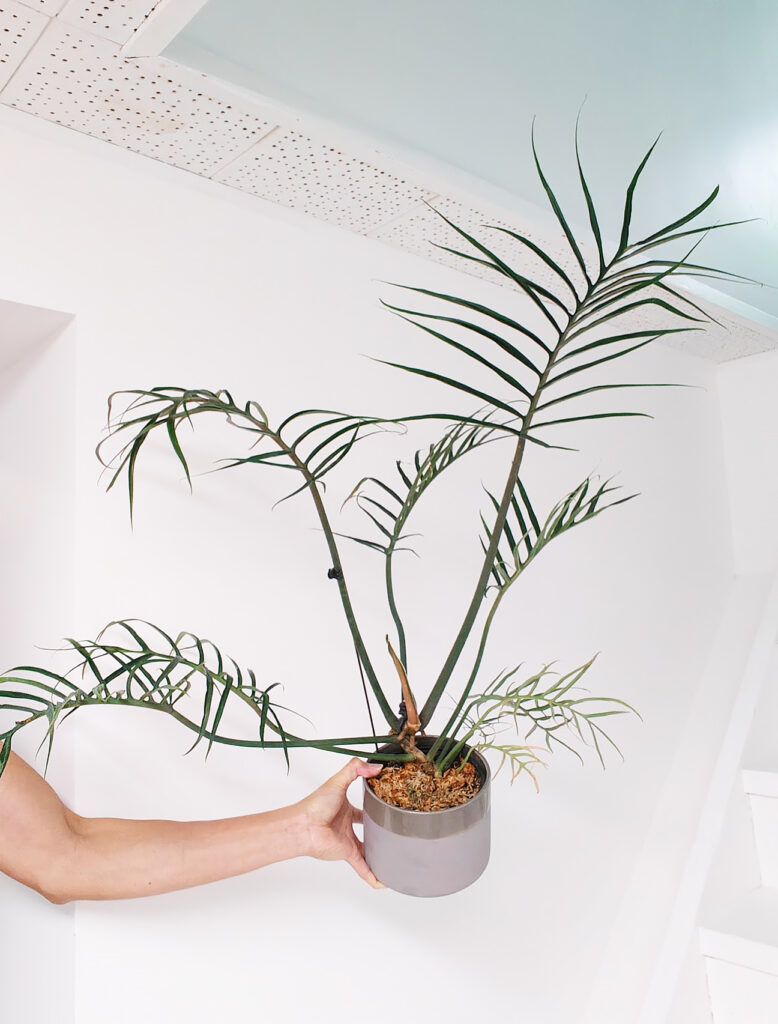
I’m very happy with how the plant has grown – the current leaves come out huge and the overall plant has a nice whimsical shape. Some people like mounting the Philodendron tortum to a moss pole but I prefer the “shrub” shape so I will keep propagating the top as it keeps getting longer. I anticipate it will need to be done every 2 or 3 years.
Need help with your houseplants?
Submit a question
or get a consultation
Good luck on your Philodendron tortum journey!

